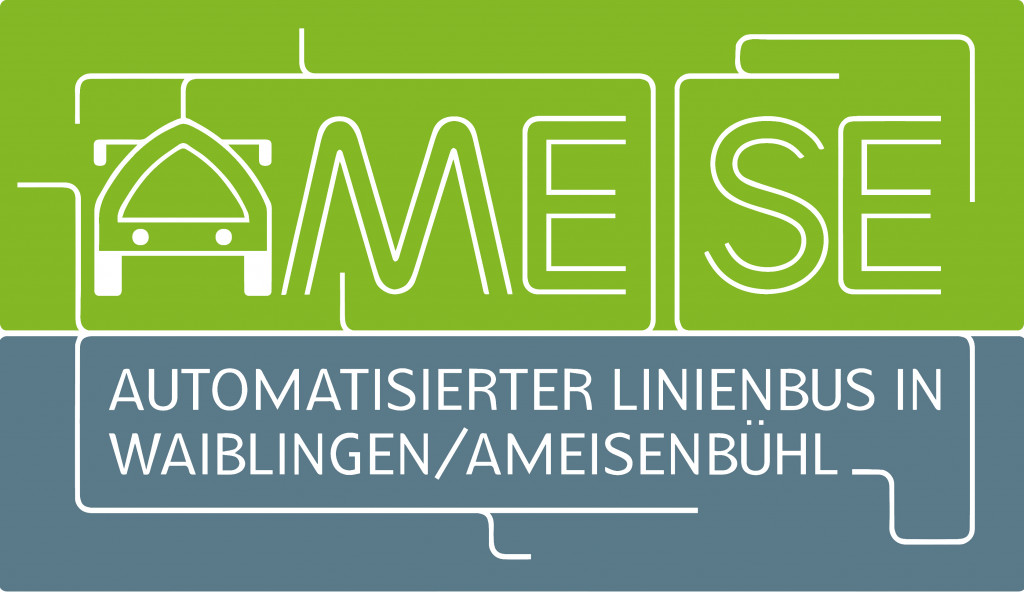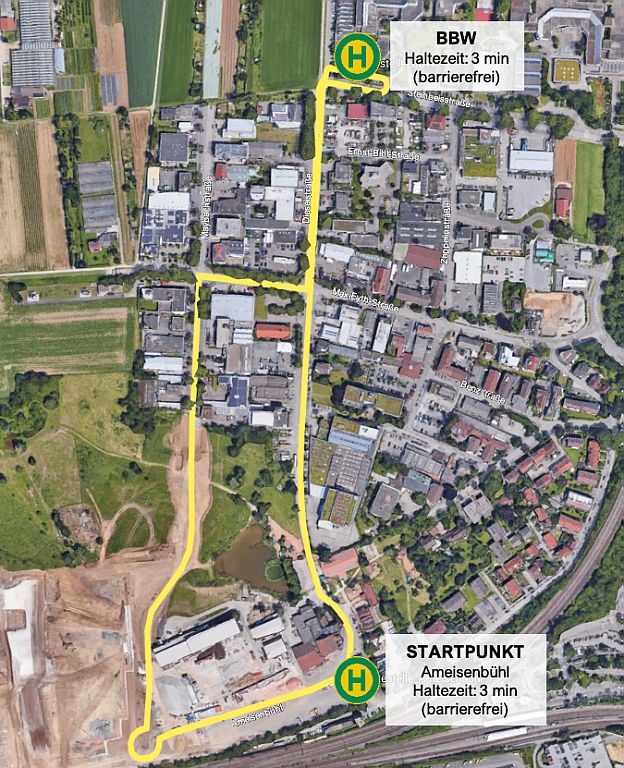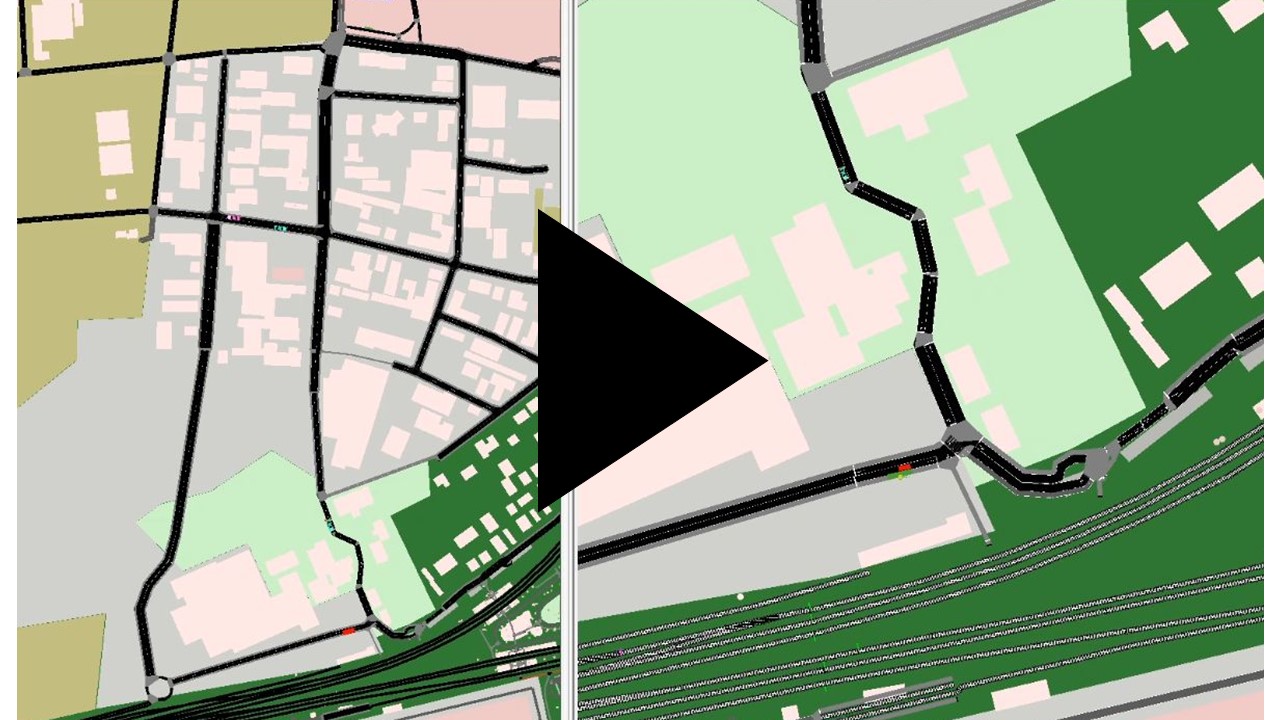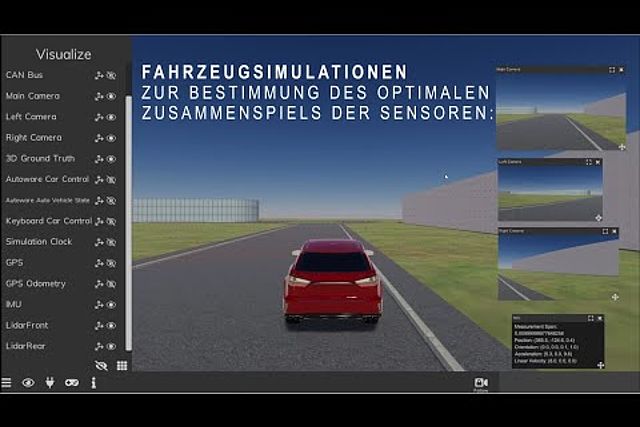Automated public service bus for local public transport
The Institute of Automobile Management (IAM) is investigating and testing the technology option of autonomous driving in the local public transport system in Waiblingen, a town in the Rems-Murr district of Southern Germany, as its contribution to the AMEISE collaborative research project. In a real-world laboratory, the local population is involved in testing and analysing the use of [autonomous] buses in the local public transport system.
The objective of the research project, which is taking place in the “Ameisenbühl” district of Waiblingen, is to develop and study highly automated M2 class vehicles (small buses) with zero-emission propulsion to convey passengers in the local public transport system. The research adopts a holistic approach and involves the integration of innovative traffic infrastructure concepts, their incorporation into the operation of the local public transport system in the urban environment, and the involvement of local stakeholders. Inclusion is taken into account by paying particular attention to the needs of those with an impairment.
Information on projects and work which prepared, supported, monitored and facilitated the AMEISE project can be found on the pages for our Completed research projects and Current research projects.
Media and links to the AMEISE project
For videos and further information, please use the following links:
Autonomous bus service in Waiblingen




